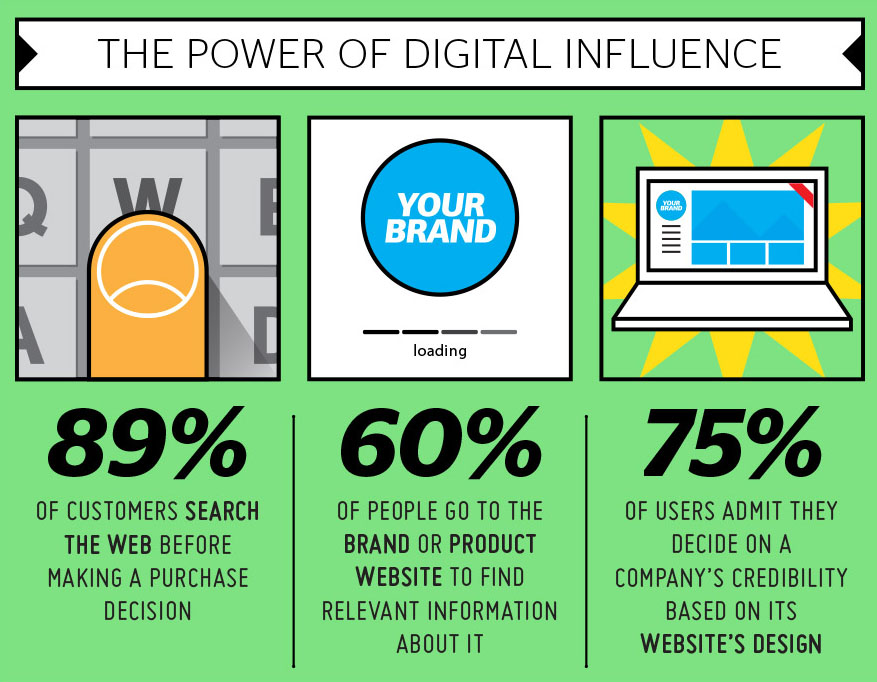 In today’s digital age, having a website is essential for any business or individual looking to establish an online presence. However, not all websites are created equal. The quality of a website can significantly impact its ability to produce results and achieve success. Here we explain the many differences in website design and development, helping novice individuals understand what makes a website effective and successful. For better results, one must be understanding the many website differences that exist. Better quality websites, produce often better results.
In today’s digital age, having a website is essential for any business or individual looking to establish an online presence. However, not all websites are created equal. The quality of a website can significantly impact its ability to produce results and achieve success. Here we explain the many differences in website design and development, helping novice individuals understand what makes a website effective and successful. For better results, one must be understanding the many website differences that exist. Better quality websites, produce often better results.
What is Website Design?
Website design refers to the visual and aesthetic aspects of a website. It encompasses the layout, color schemes, typography, images, and overall look and feel. Good design is not just about making a website look attractive; it’s also about ensuring that the user experience (UX) is smooth and intuitive.
Key Elements of Website Design
Layout and Structure: The arrangement of elements on a webpage, including headers, menus, content areas, and footers. A well-structured layout helps users navigate the site easily.
Color Scheme: The combination of colors used on the website. Colors should be consistent with the brand and create a visually appealing experience.
Typography: The choice of fonts and text styles. Readable and attractive typography enhances user engagement.
Images and Graphics: The use of images, icons, and other graphics. High-quality visuals make the website more engaging and professional.
Responsive Design: Ensuring the website looks good and functions well on all devices, including desktops, tablets, and smartphones.
What is Website Development?
Website development involves the technical aspects of creating a website. It includes coding, programming, and configuring the server and database. Development ensures that a website is functional, fast, and secure.
Key Elements of Website Development:
Front-End Development: The part of the website that users interact with directly. It involves coding the design using HTML, CSS, and JavaScript.
Back-End Development: The server-side logic and database management. It involves coding the functionality that powers the website, using languages like PHP, Python, Ruby, or Node.js.
Content Management System (CMS): Platforms like WordPress, Joomla, or Drupal that allow users to manage website content without needing advanced technical skills.
E-Commerce Integration: For online stores, development includes integrating shopping cart systems, payment gateways, and product management tools.
Security: Implementing measures to protect the website from cyber threats. This includes using SSL certificates, firewalls, and secure coding practices.
Differences in Website Quality
Design Quality
High-quality website design is characterized by a visually appealing and user-friendly interface. It should:
Enhance User Experience: A well-designed website makes it easy for users to find information and complete actions, such as making a purchase or filling out a contact form.
Reflect Brand Identity: The design should be consistent with the brand’s image and values, helping to build trust and recognition.
Be Accessible: A good design is inclusive, ensuring that people with disabilities can navigate and use the website.
Development Quality
High-quality website development ensures that the website is functional, reliable, and secure. It should:
Load Quickly: A fast-loading website keeps users engaged and reduces bounce rates. Google reports that as page load time goes from one second to 10 seconds, the probability of a mobile site visitor bouncing increases by 123%.
Be Secure: Protecting user data and preventing breaches are critical for maintaining trust and complying with regulations.
Function Smoothly: All features and functionalities should work as intended, without glitches or errors.
Ability to Produce Results
Design for Results
Effective website design contributes to achieving business goals by:
Driving Conversions: Clear calls-to-action (CTAs) and an intuitive layout guide users towards desired actions, such as signing up for a newsletter or making a purchase.
Improving Engagement: Engaging visuals and a user-friendly interface keep visitors on the site longer, increasing the chances of conversion.
Enhancing SEO: A well-structured design with proper use of headings, images, and content can improve search engine rankings.
Development for Results
Effective website development ensures the technical performance necessary to support business goals by:
Enhancing User Experience: Fast load times, secure transactions, and smooth functionality improve user satisfaction and retention.
Supporting Scalability: High-quality development allows the website to grow and handle increased traffic and additional features.
Ensuring Reliability: A well-developed site minimizes downtime and errors, providing a consistent experience for users.
Success Factors
User Experience (UX)
A successful website prioritizes user experience. This means creating an intuitive navigation structure, providing relevant content, and ensuring the site is responsive and accessible. Good UX design leads to higher user satisfaction and increased engagement.
Search Engine Optimization (SEO)
Both design and development play roles in SEO. Well-structured content, fast load times, mobile optimization, and secure connections (HTTPS) are crucial for ranking well in search engines. Higher rankings lead to increased visibility and traffic.
Analytics and Continuous Improvement
Successful websites are continually monitored and improved based on data and user feedback. Using tools like Google Analytics, site owners can track performance metrics and make informed decisions to enhance the site.
Integration with Marketing Strategies
A successful website is often integrated with broader marketing strategies. This includes social media integration, email marketing, and online advertising campaigns. A cohesive approach ensures that all channels work together to drive traffic and conversions.
The Role of Website Design and Development Consultants
Website design and development consultants can provide invaluable assistance in creating a high-quality, results-driven website. They offer expertise in both the aesthetic and technical aspects of building a website, ensuring that it is visually appealing, functional, and optimized for success.
Benefits of Working with Consultants
Expertise: Consultants bring specialized knowledge and experience in design and development, helping you avoid common pitfalls.
Customized Solutions: They provide tailored solutions that meet your specific business needs and goals.
Efficiency: Consultants can streamline the design and development process, saving you time and resources.
Ongoing Support: They offer ongoing maintenance and support to ensure your website remains up-to-date and effective.
Understanding the Differences
Understanding the differences between website design and development is crucial for creating a high-quality website that produces results and achieves success. Good design enhances user experience and engagement, while robust development ensures functionality, security, and reliability. By focusing on both aspects and leveraging the expertise of consultants, you can build a website that not only looks great but also drives business growth and success. For better results, one must be understanding the many website differences that exist. Better quality websites, produce often better results.









